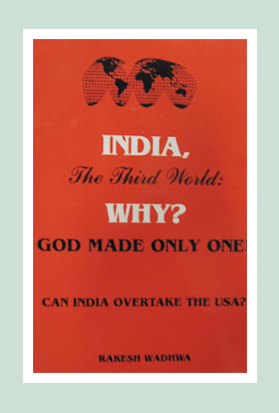History of Gambling in the United States
A report of the American Gaming Association stated that 483 commercial casinos in the US gathered revenues of $34.6 billion in 2010. Nevada casinos boasted of $10.4 billion of the total revenue in the same year. Do these figures make you wonder about how and when gambling started in the US?
Professor I. Nelson Rose, an authority on gambling laws, divided the American gambling into three phases:
1600s to mid 1800s – The First Phase
Gambling was practiced even by the first settlers of the British-American colonies. It was present in the form of lotteries. From time to time, the 13 original colonies organized lotteries to raise revenues for the purpose of improving schools and universities. The organization of lotteries emerged as a civic responsibility. In fact, some of the nation’s most prestigious institutions – Harvard, Princeton and Yale – were established with the help of these lotteries.
George Washington and Benjamin Franklin were prominent sponsors of lotteries dedicated to public works assignment. Lotteries continued to be popular in the 19th century. In 1823, a private lottery was approved by the Congress for beautifying Washington DC. This era also witnessed wagers on horse racing and the development of casinos (in the form of taverns and roadhouses).
By the end of 1800, gambling was legitimized in the lower Mississippi Valley. However, during this period, gambling was also attacked on moral and religious grounds. Moreover, there were a large number of lottery scandals that fanned the air of opposition. In 1833, NY, Massachusetts and Pennsylvania brought an end to legal lotteries. By 1860, only three states – Kentucky, Missouri and Delaware – continued to allow lotteries.
This period (1840 – 1860) was also the heydays of the riverboat gamblers. Professional gamblers shifted from their bases in towns to riverboats. As opposed to the modern riverboat gambling or floating casinos, the riverboats in that era were not casinos. Passengers gambled amongst themselves in an informal way.
By the end of 1800, riverboat gambling also met its demise with the introduction of the railroad and the outbreak of the American Civil War (1861–1865). However, the end of the first phase did not put an end to illegal gambling.
Mid 1800s to early 1900s – The Second Phase
This phase was spurred by the boom in mining and the expansion of the west frontier. The gold rush brought miners to California and also boosted the amount as well as the types of gambling. San Francisco became the gambling centre in the US during this era. In fact, gambling became so popular that a 15 x 25 canvas tent cost $40,000 on a yearly basis and the advance had to be paid in gold dust! Gambling was at a pinnacle in California between 1849 and 1855. The 1850s also saw gambling establishments getting authorized for the purpose of raising money. As settlers moved beyond California, so did gambling.
Post 1855, public opinion turned against gambling and the Legislature enacted laws targeting professional gamblers. San Francisco saw professional gamblers being lynched in 1856. In 1860, the Legislature banned banking games. In 1885, gaming was made illegal. In 1891, the penalty for playing and operating the game became the same.
However, the prohibition on gambling did not stop it from happening; instead drove it underground. Despite the statutes against gambling, 1895 saw the invention of the slot machine. The machine got outlawed only in 1911. Nevada oscillated between authorizing and banning games. Lotteries also made a comeback during the same period since there was a need to rebuild the nation ravaged by war. The Louisiana Lottery was the most prominent venture of the 1860s.
Gaming scandals led to the imposition of more federal legislation on lotteries. The Louisiana Lottery was abolished in 1895 and it was revealed that the promoters of the Lottery made huge ill-gotten profits. It was not just lotteries but even horse racing was found to be plagued by fraudulent activities. By 1910, almost all types of gambling were made illegal in the US.
Early 1930s to 21th century – The Third Phase
The Great Depression which began in 1929 gave a huge boost to gaming. In 1931, Massachusetts legalized bingo in order to help charities and churches raise money. By 1950s, 11 states had legalized bingo. Wagers in horse races also made a comeback. In the 1930s, 21 US states re-introduced race tracks.
The Nevada Legislature, in a bid to promote tourism, legalized almost all types of gambling in 1931. Nevada had an already-booming, albeit illegal, gambling industry. In fact, the move to legalizing gambling was due to the concern that prohibition on gambling could not be enforced and illegal gambling was corrupting the concept of law enforcement.
The gaming industry in Nevada was helped by the fact that Los Angeles made gambling businesses illegal. The gambling establishments in Los Angeles were mostly run by criminals who simply moved to Nevada to put their skills to use.
Lotteries also resurged during this period. One of the most prominent forms of lotteries was the Irish sweepstakes which began in 1930 with the intent of raising money for Irish hospitals. The illegal ‘number’ game also became quite popular and grossed $20 million in Chicago during the 1970s. In 1971, New Jersey launched its first successful modern lottery.
The third phase has not ended. The previous two phases were brought to an end by scandals and issues concerning morals. Will this phase too come to an end? Can gambling again become illegal across the United States?
What will happen, we don not know. What should happen is clear. Gambling is being legalized in many parts of the world. Most recently Singapore legalized gambling in form of two casinos. Both are doing well and in 2010-11, raised Singapore’s GDP by 15%.
India just has to recognize that with gambling legal in neighboring Nepal, Sri Lanka and a bit further in Singapore, Macau, Mauritius, Cambodia and Philippines, it would do well to allow gaming to spread across the country. Prohibitions are not shocking, it merely results in the activity going underground and what purpose does it serve?
 Rakesh Wadhwa. Ever since, I was a school boy, I knew India was on the wrong path. Socialism was just not what we needed to get ahead. Government controlled our travel; government controlled our ability to buy and sell; and government controlled our freedom to move our money. My life has focused on the inherent rights people have. When I was in college, I never understood, what the governments meant by their "socialistic attitude". If people are free to buy, sell and move their capital themselves without any restrictions by state, then the welfare of people is inevitable & hence the countries they live in will become wealthy. The government has no right whatsoever, to point a finger at me or my business. I am not a revolutionary. I just want to light up my cigarette and not get nagged about it. I believe in non-interfering attitude to attain more.
Rakesh Wadhwa. Ever since, I was a school boy, I knew India was on the wrong path. Socialism was just not what we needed to get ahead. Government controlled our travel; government controlled our ability to buy and sell; and government controlled our freedom to move our money. My life has focused on the inherent rights people have. When I was in college, I never understood, what the governments meant by their "socialistic attitude". If people are free to buy, sell and move their capital themselves without any restrictions by state, then the welfare of people is inevitable & hence the countries they live in will become wealthy. The government has no right whatsoever, to point a finger at me or my business. I am not a revolutionary. I just want to light up my cigarette and not get nagged about it. I believe in non-interfering attitude to attain more. 
 The Bastiat Award is a journalism award, given annually by the International Policy Network, London. Bastiat Prize entries are judged on intellectual content, the persuasiveness of the language used and the type of publication in which they appear. Rakesh Wadhwa won the 3rd prize (a cash award of $1,000 and a candlestick), in 2006.
The Bastiat Award is a journalism award, given annually by the International Policy Network, London. Bastiat Prize entries are judged on intellectual content, the persuasiveness of the language used and the type of publication in which they appear. Rakesh Wadhwa won the 3rd prize (a cash award of $1,000 and a candlestick), in 2006.
2 Comments
sandy
February 7, 2012beautifully compiled information……..good knowledge!!!!
sonam
February 9, 2012Interesting read………